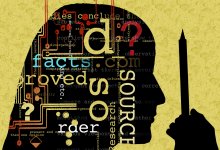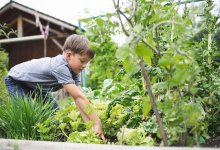Science
Explore and share tips, strategies, and resources for helping students develop in science.
How Meditation Helps Me Teach a Tricky Physics Concept
Physics can feel inscrutable to students; this lesson helps them understand a graphing problem by analyzing their own breathing.1kYour content has been saved!
Go to My Saved Content.Exploring Before Explaining Sparks Learning
New elementary science teachers can build student engagement and enhance learning by using the explore-before-explain approach.Your content has been saved!
Go to My Saved Content.Real, Fake, or Deepfake? This Lesson Helps Students Decide
Students examine videos and online information to investigate what is real and what is not in this engaging lesson.67.8kYour content has been saved!
Go to My Saved Content.Why Students Should Write in All Subjects
Writing improves learning by consolidating information in long-term memory, researchers explain. Plus, five engaging writing activities to use in all subjects.377.9kYour content has been saved!
Go to My Saved Content.Why Kids Should Nature Journal at All Grade Levels
A 2023 review makes a strong case that hands-on observation of natural phenomena has both academic and psychological benefits.Designing Science Inquiry: Claim + Evidence + Reasoning = Explanation
The Claim, Evidence, Reasoning framework is a scaffolded way to teach the scientific method.597kYour content has been saved!
Go to My Saved Content.Teaching the Concept of Equity Through Gardening
Plants can illustrate how different people need different things to be nourished—and how equality and equity differ.192.6kYour content has been saved!
Go to My Saved Content.How to Structure Successful Science Investigations
High school students get the most out of lessons when they receive direct support along with consistent opportunities to explore concepts on their own.4.1kYour content has been saved!
Go to My Saved Content.Boosting Engagement in Biology With Storylines
Organizing curriculum around a central story motivates students to advance the narrative while mastering advanced material.5.9kYour content has been saved!
Go to My Saved Content.Applying Literacy Standards Across Content Areas
High school teachers in all classes can help students strengthen their reading, writing, speaking, and listening skills.3 Strategies to Effectively Teach Science Vocabulary
Using engaging, in-context strategies helps elementary students truly understand new terms.9.3kYour content has been saved!
Go to My Saved Content.Flipping the ‘I Do, We Do, You Do’ Model in Science Class
Instead of starting with a teacher’s explanation, many science lessons could begin with students exploring a phenomenon.Making Hands-On Science Work in Elementary School
With a few systems in place, active science experiences can be fun and meaningful for both students and teachers.Boosting Midyear Engagement With Place-Based PBL
High school teachers can build projects around issues in the local community to motivate students before and after winter break.2.2kYour content has been saved!
Go to My Saved Content.Teaching a Citizen Science Project in High School
A biology teacher shares learnings and takeaways from the “controlled chaos” of her class’s first citizen science project.5.2kYour content has been saved!
Go to My Saved Content.












